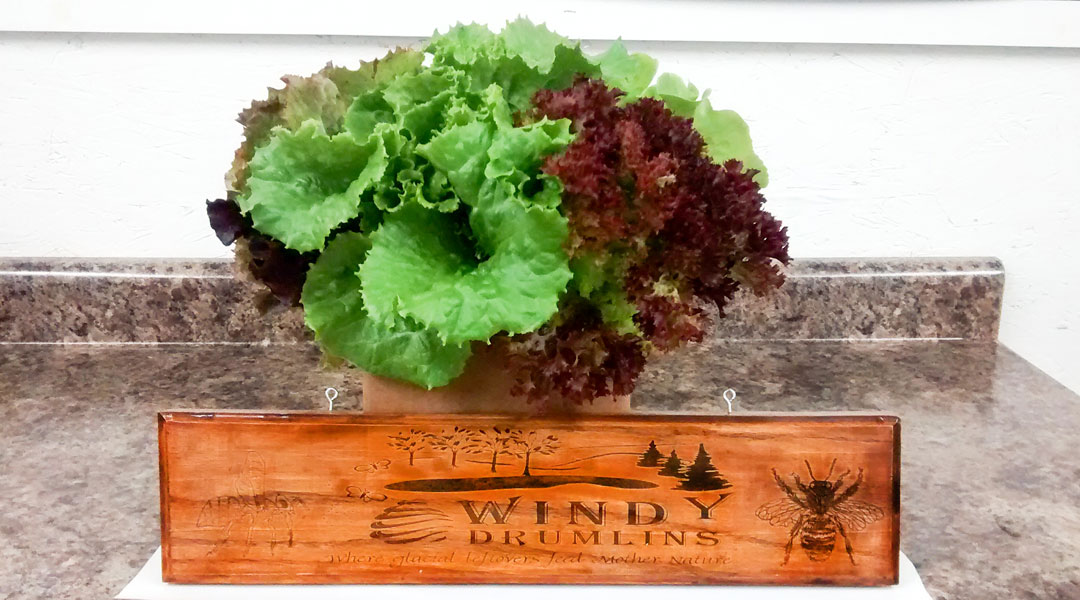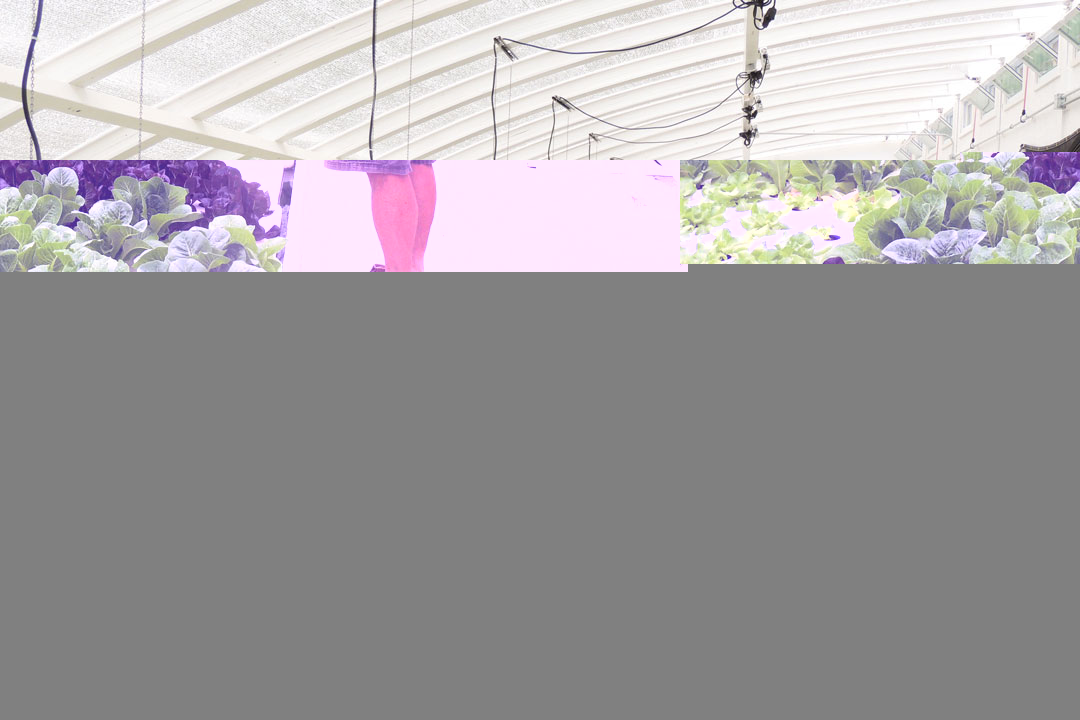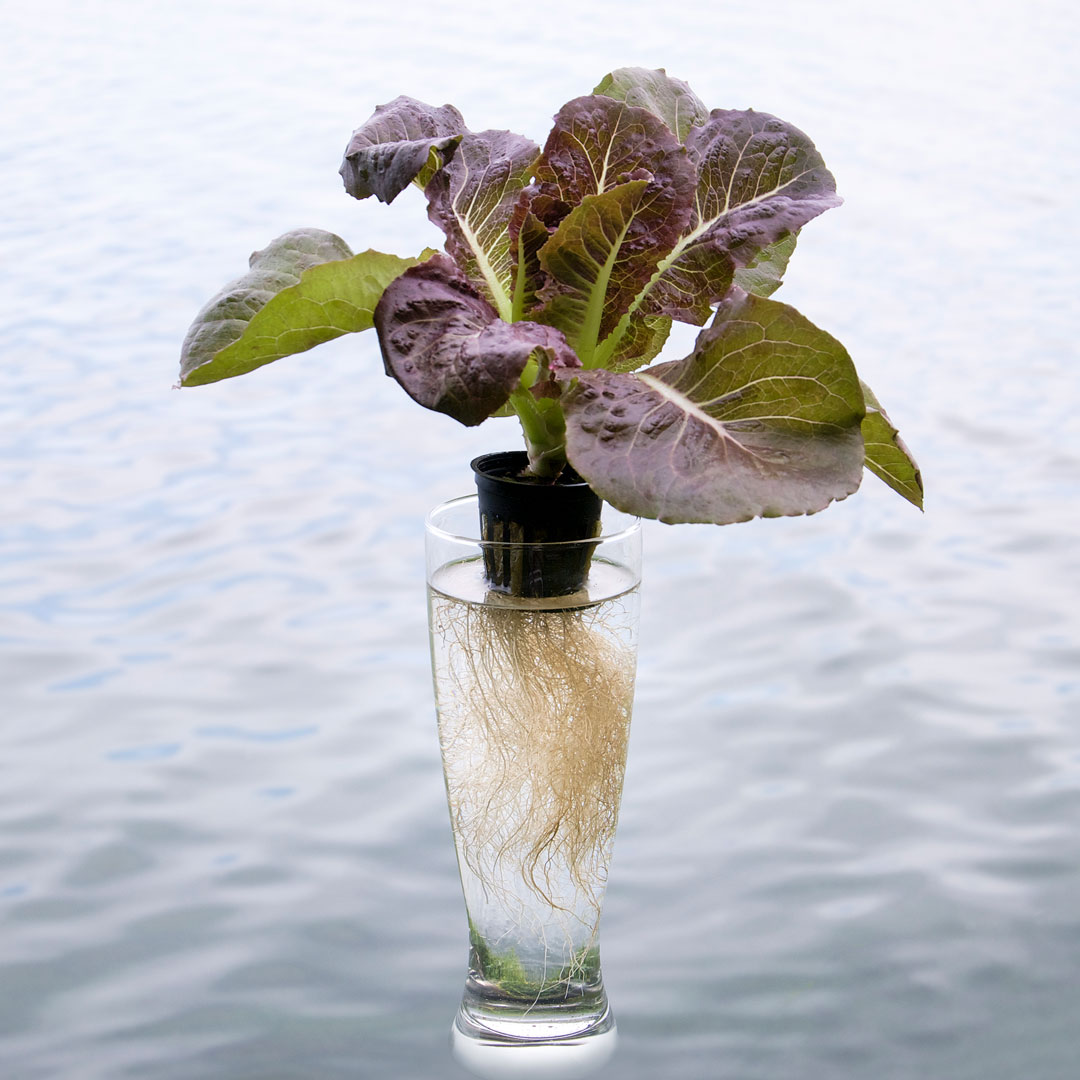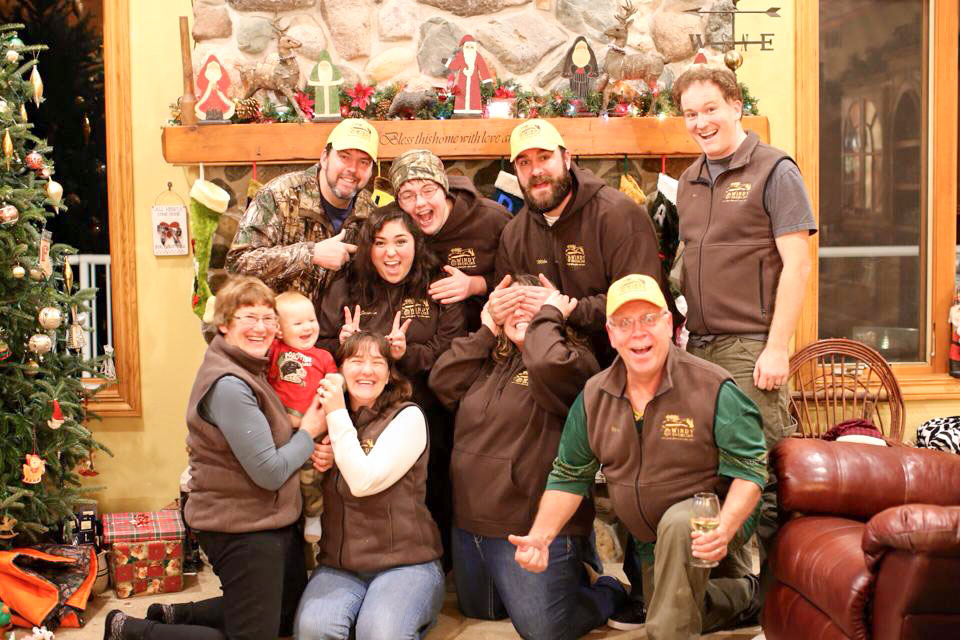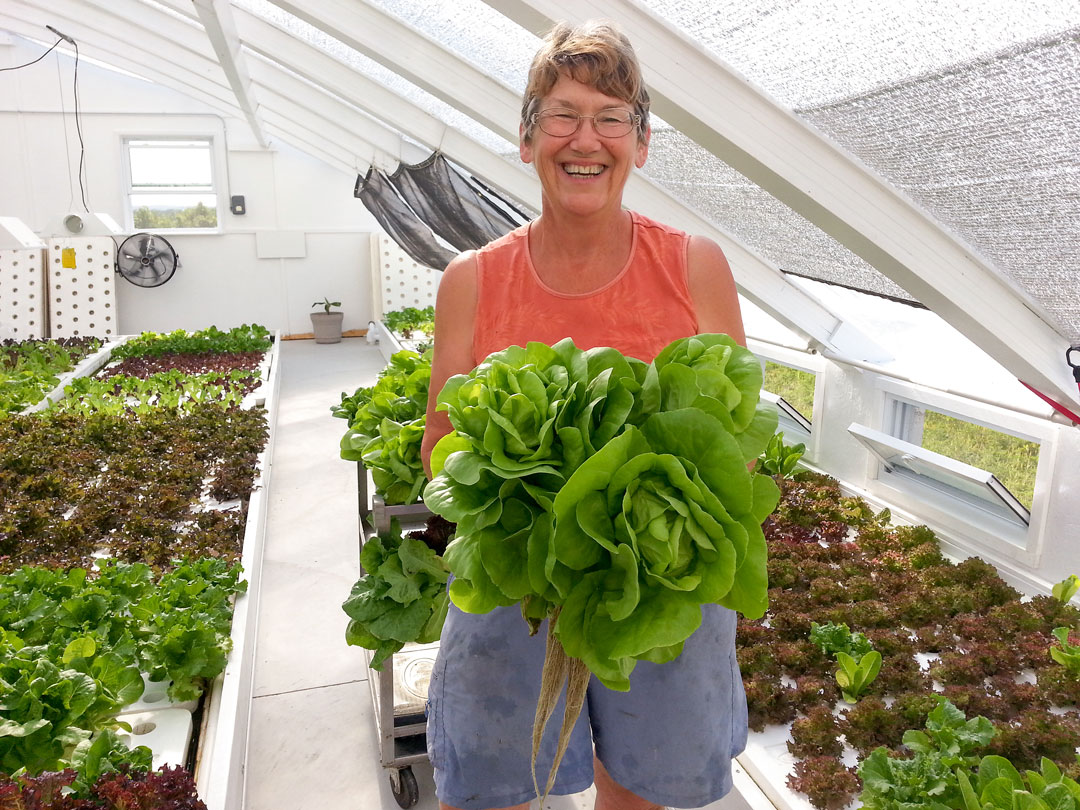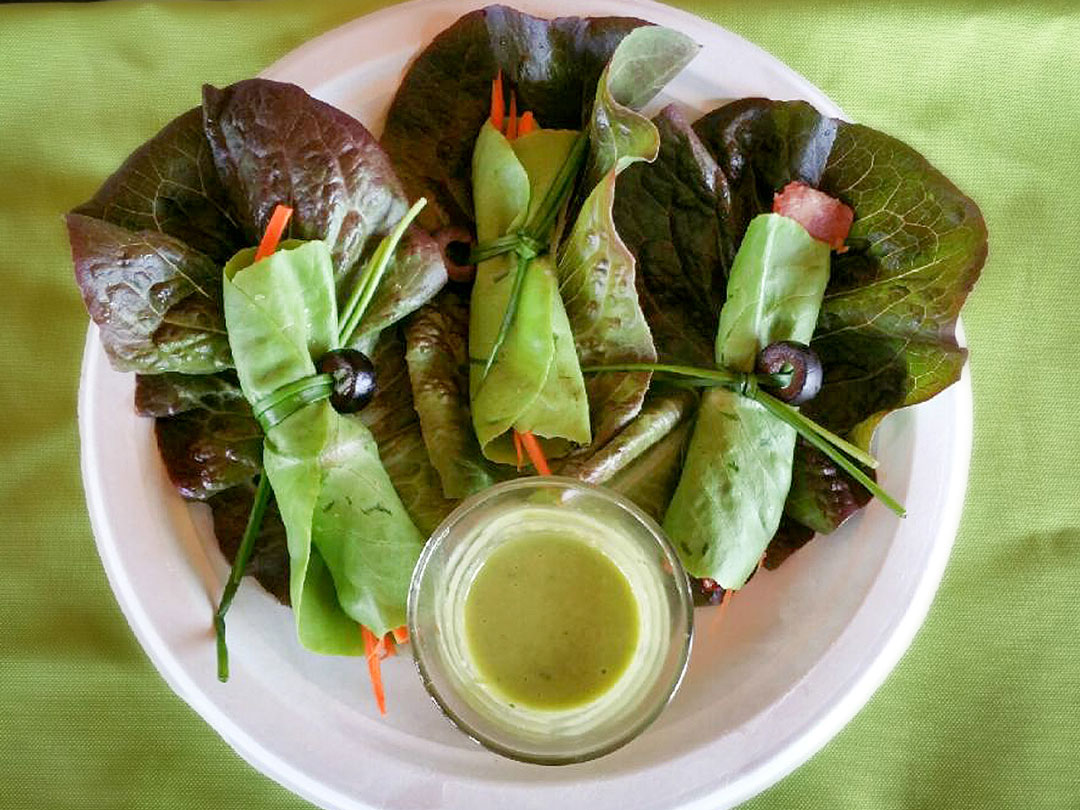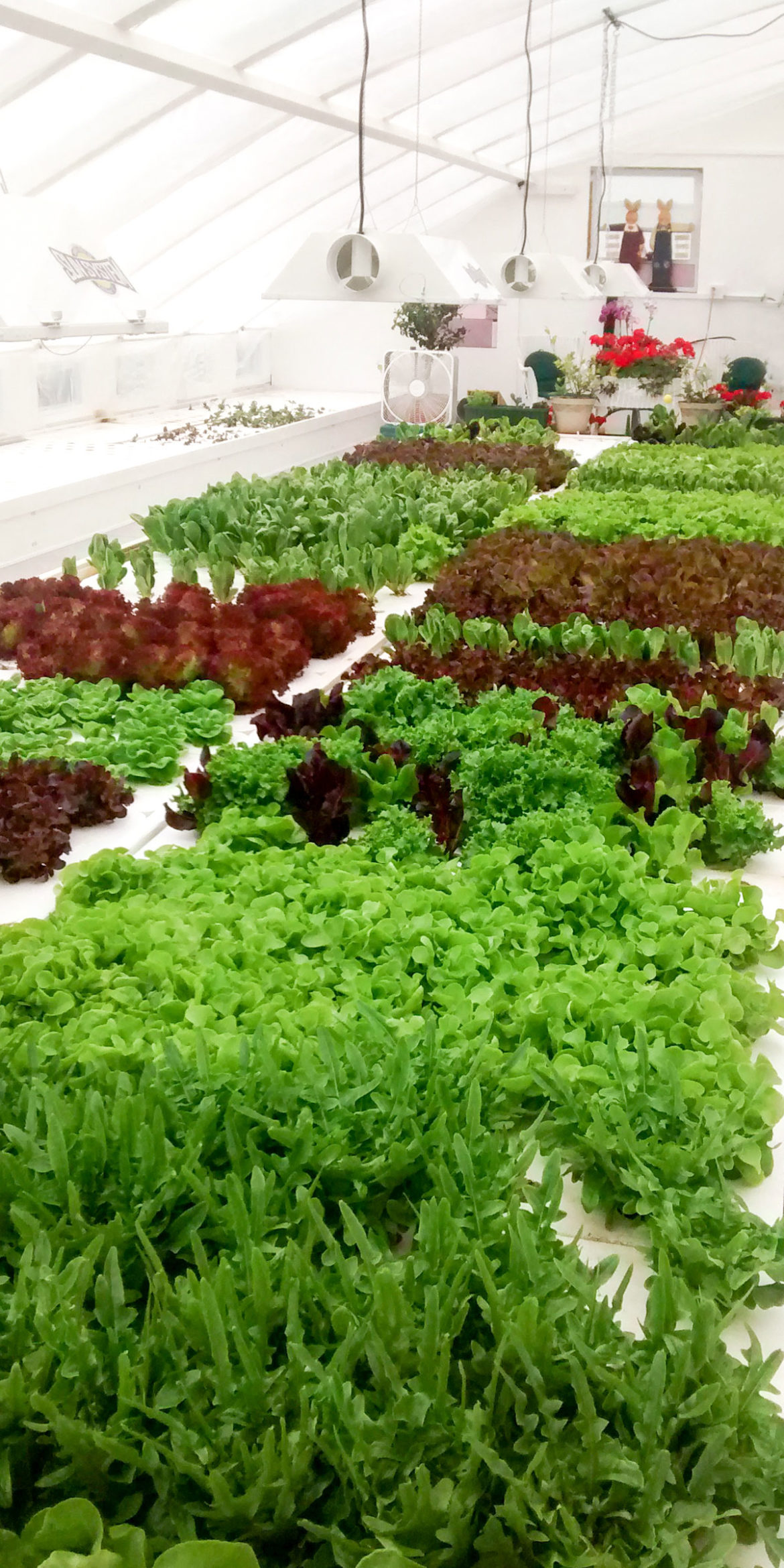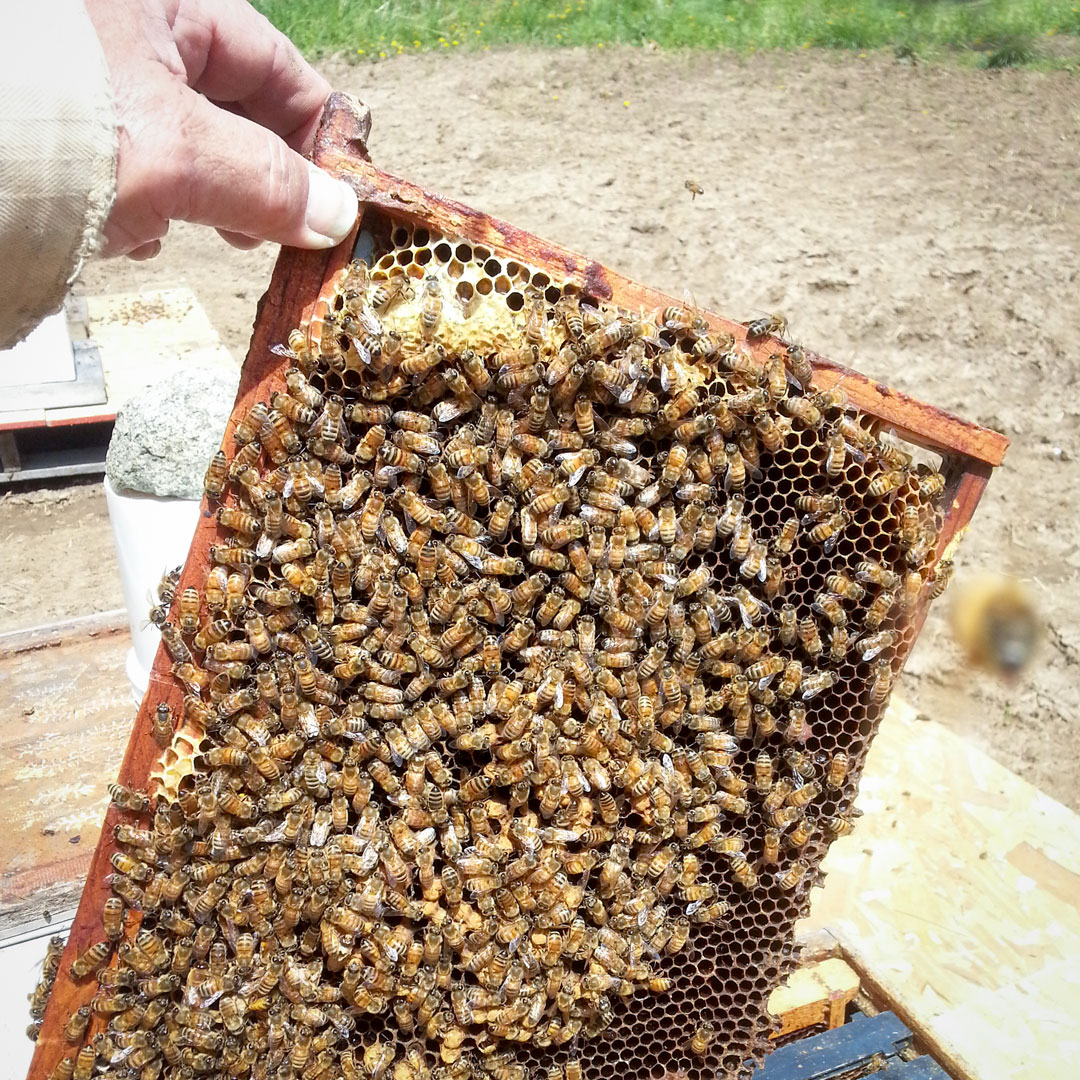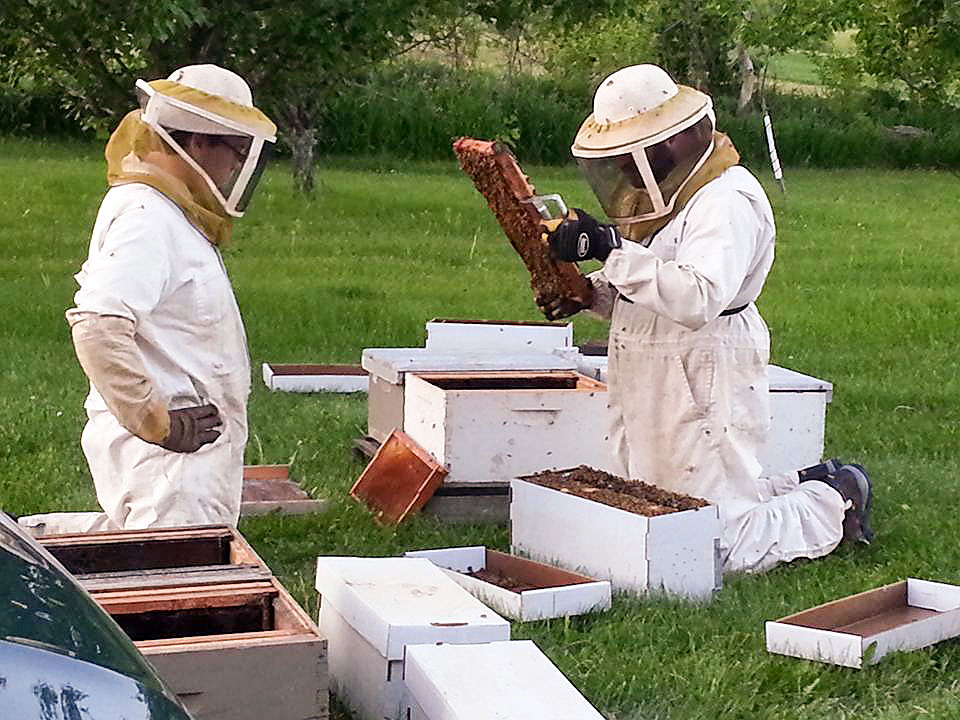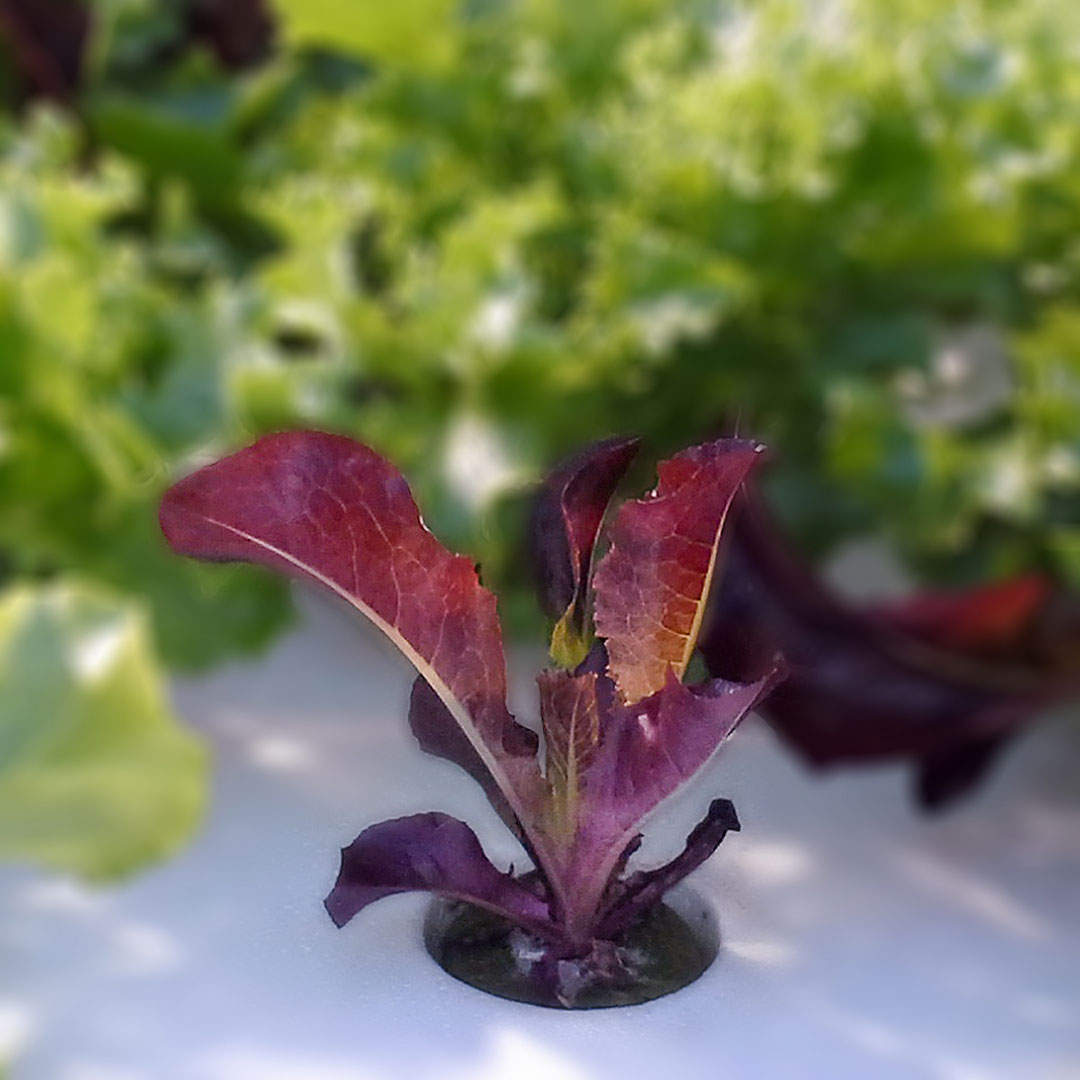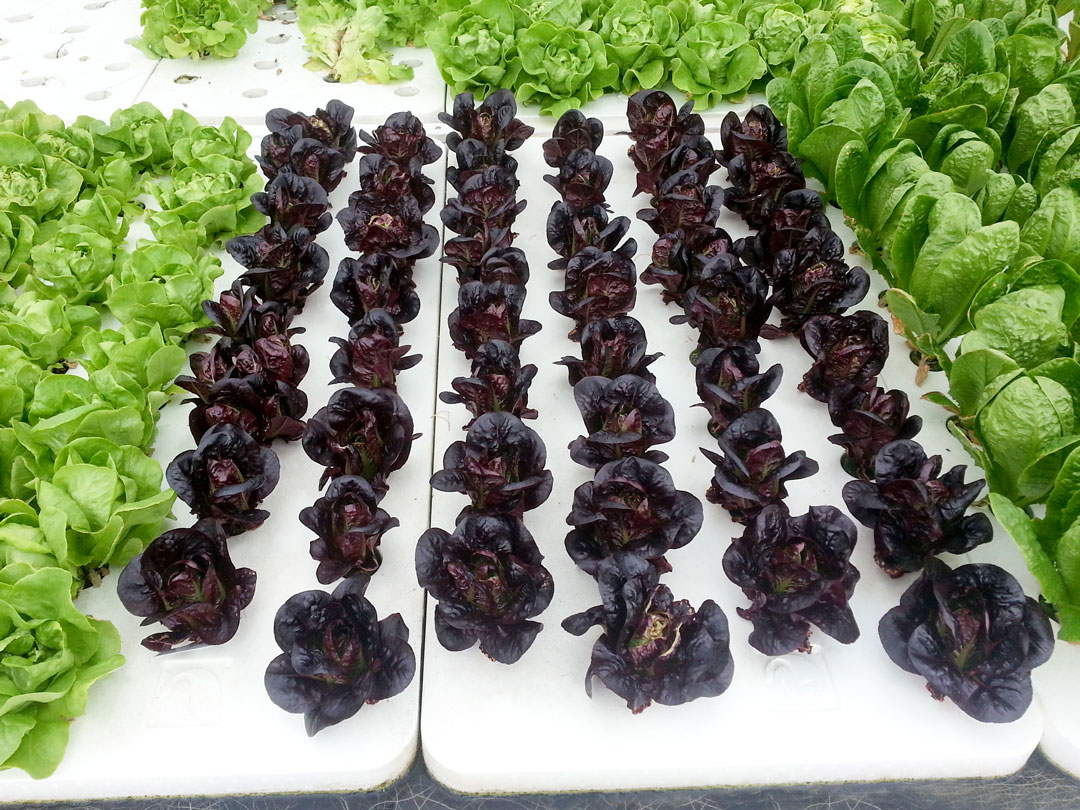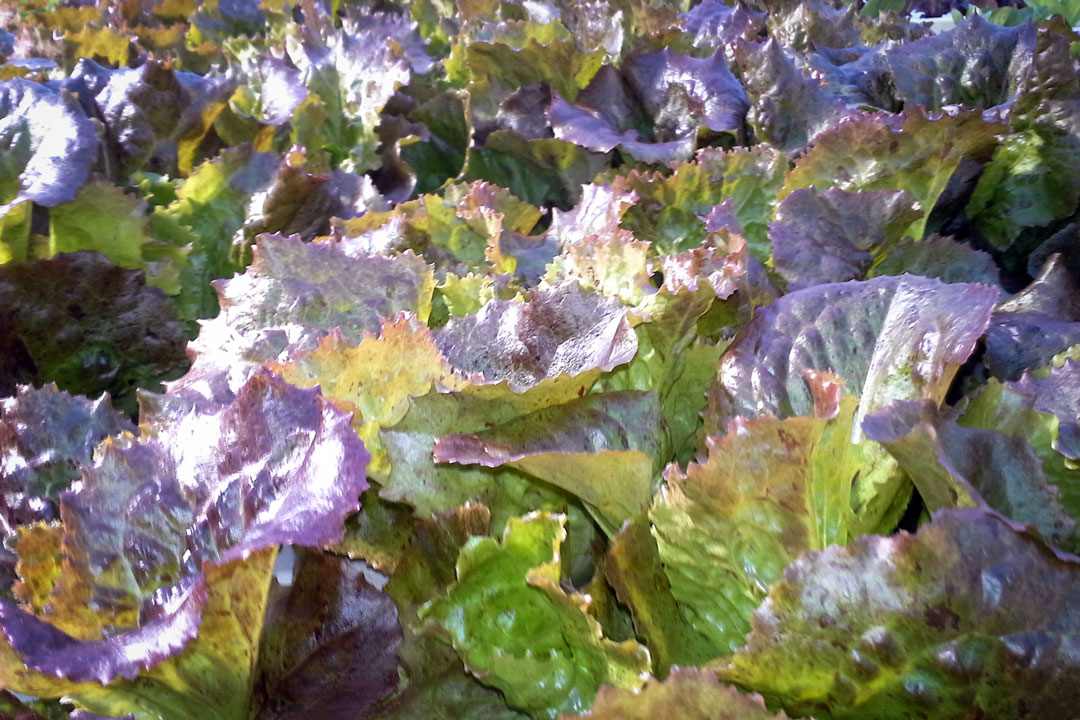
By: Alex Bennett
When the snow is thick on the ground this winter, there will be produce at Windy Drumlins that is just as fresh and nutritious as you can grow and pick in your own garden in July. Using a relatively new farming method called aquaponics, the Krause family of Horicon grows over twelve varieties of lettuces and greens year-round at their family owned and operated sustainable farm, Windy Drumlins.
Windy Drumlins is a local source for fresh, sustainably grown produce. It is the culmination of years of planning and research, according to co-owners Fran and Mark Krause. “It seemed an excellent continuation of our journeys throughout the food industry,” opined Mark during recent comments about just why they got started with aquaponics. “Before settling in Horicon, we travelled the world, moving 11 times in 26 years for Mark’s job in the food industry,” Fran added. “Through all our travels we both knew that some day we wanted to return to Wisconsin to build a home where we could grow as much of our own food as possible using sustainable methods.”
As business ideas began to percolate, everyone in the family got involved. Daughters Laura and Sara, son Mike, grandchildren Jessie and Kyle, and son-in-laws Eric and Alex, as well as Fran and Mark’s siblings, all had a role in shaping the ideas that have made Windy Drumlins what it is today. With three generations adding their talents and perspectives, debates were lively and open-ended. Everyone agreed that sustainability would be at the heart of the Windy Drumlins mission.
Fran grew up on a dairy farm in Princeton and already knew a lot about what it takes to do things sustainably. Mark grew up as a city kid in Wausau and looked at things from a business angle. Son Mike has taken on the family’s beekeeping. “Mark did all the beekeeping since the early 1980s,” Fran will tell you, “but the lifting is just plain hard work, something our son doesn’t mind at all.” Mike currently maintains 30 hives in two different locations, and has plans to expand to nearly 100 hives next year. Finding good spots for his bees is a constant challenge. Daughter Laura produces natural personal care products using honey, beeswax, and natural oils. She has recently begun to offer her products to the public, and local interest and enthusiasm has been high. Her background as a high school science teacher certainly is a great foundation for product development.
At Mike’s suggestion, the family began to explore aquaponics. Aquaponics involves building a self-contained indoor ecosystem using a series of water tanks and over 300 feet of grow beds. Water is continuously circulated and aerated throughout the ecosystem resulting in harvestable fish and grow beds full of vegetables. The system’s main input is food for the fish. Good bacteria are introduced to the system to convert fish waste into nutrients for the plants. One challenge of aquaponics is to establish a balance among the three elements of fish, bacteria, and plants, a balance that can take anywhere from several months to a year to stabilize.
Aquaponically grown produce has a lot of advantages. The plants grow in a completely controlled environment, meaning they aren’t exposed to chemicals or animal waste that might affect them outdoors. Not using soil means soil-borne illnesses are completely absent. Because the system is indoors and self-contained, chemicals are not needed to control crop-destroying pests. Instead, “good bugs” like ladybugs and lacewings are added when needed. There are no weeds to worry about either, so there is no need for herbicides. The end result is a clean, healthy crop. Not only is aquaponics clean, it is also efficient. Aquaponics farming uses over 90% less water than soil-based farming. Experts claim yields of two to five times more per square foot than conventional methods.
Last but not least, because aquaponically grown plants are not in soil, they can be sold “alive” with the roots still intact. This helps avoid nutritional degradation known to occur after a vegetable is picked. Our customers at local farmers’ markets have loved being able to keep their plants in water on the kitchen counter, decorating their space with vivacious greenery that stays fresh until it is time to pick and serve.
We began our exploration of aquaponics during the spring of 2013 by taking training courses and doing a lot of research. First we purchased a family-sized system for our shed. There we grew test crops of lettuce and tomatoes, experimented with artificial light to supplement the sun on gloomy days, and got a feel for how our process might work in a larger setting. We also got our first chance to eat garden-fresh produce in winter, which was pretty cool!
In late 2013 we began planning for the Windy Drumlins commercial-scale greenhouse. Using the information we gained through our training courses, we concluded that a Chinese-style greenhouse would be the most economical and productive choice for our location. This type of greenhouse, which looks a bit like a squat airplane hanger that has been cut down the middle longitudinally, is designed to soak up as much solar energy as possible. The spot we had in mind for it would take advantage of the long, south-facing clear side of the building during the cold months. Following plans from our trainers, Friendly Aquaponics, we broke ground in September 2013. During the winter of 2013/2014 the family worked together in their heated shop putting together many of the components needed to complete the building. One component, the beams – 24 in all – were built by the family and represent a key component in the creation of a Chinese-style greenhouse. As winter ended, construction began in earnest and was completed in early October 2014. Currently the Windy Drumlins greenhouse is the only commercial-scale Chinese-style greenhouse in Wisconsin.
Of course, completing the greenhouse itself was only part of the process. Next, the aquaponics ecosystem had to be nurtured into working health. We began by adding bluegill and perch not long after the building was completed. It took another five or six weeks for conditions to stabilize enough to be ready to plant. In February 2015, Windy Drumlins made its first sales to the public at the Madison Home and Garden Show at the Alliant Center, where we were overwhelmed by the positive response to our fresh produce.
The Windy Drumlins greenhouse has 1304 square feet of growing area. Depending on plant density, as many as 17,930 plants can be cultivated at one time in the growing beds. Typically, only about 6,000 plants are grown at a time, with an additional 3,000 seedlings in separate germination tables. Once the operation is fully ramped up and sales are steady, the family expects to sell an average of 1,000 units per week, or 52,000 units per year.
Right now, Windy Drumlins is growing a mix of lettuces. Lettuce varieties vary somewhat throughout the year as weather conditions change. In the summer months, when the greenhouse gets pretty steamy inside, we grow heat-tolerant varieties. Nearly any type of lettuce can be grown outside of summer, and some varieties, such as romaine and butterhead, can be grown year-round. Windy Drumlins also grows various types of red lettuces to enhance the nutritional mix of our offerings, not to mention adding new flavors and colors to salads. We grow a number of other greens alongside the lettuces, including kale, swiss chard, leeks, and pak choi. We plan to also grow herbs in the future.
To further enhance Windy Drumlins as a one-stop shop for salad needs, we also grow microgreens, often called “super food” by some nutritional experts because of their incredibly high volume of vitamins, minerals, and anti-oxidants. Because they require different environmental conditions than lettuces and other vegetables, microgreens are not grown in the aquaponics system, but like our lettuces they are available year-round. Windy Drumlins has created its own unique mix of microgreens, which includes nine different vegetables such as broccoli, turnip, and radish. As with our lettuces, Windy Drumlins uses only non-GMO seeds and follows organic protocols, resulting in organically certified microgreens.
While the goal is to grow vegetables, during the aquaponics process the fish involved grow as well. The fish are held in three large tanks inside our greenhouse, with each tank holding about 300 fish. As the fish mature, we expect that the system will generate about 900 full-size bluegills each year. We plan to sell these fish to the public as they are harvested and replaced with younger fish called fingerlings.
Windy Drumlins is certified to grow organically, and all of its seeds are non-GMO. Our products are sold directly to visitors at Windy Drumlins farm, as well as at Back to the Best Country Store just west of Rubicon, and the Downtown West Bend Farmers’ Market each Saturday through October. We will also be selling lettuce at Wellness Found in West Bend and Berres Brothers Coffee Roasters in Watertown. We are proud that the Horicon Hills Restaurant serves Windy Drumlins greens. As winter approaches we expect to establish drop-off locations throughout Dodge County to more effectively service our customers. Please visit our website for more information www.windydrumlins.com or call us at (920) 427-6343 or (920) 427-6556 if you are interested in purchasing greens, honey, personal care products, or to tour the Windy Drumlins farm.
